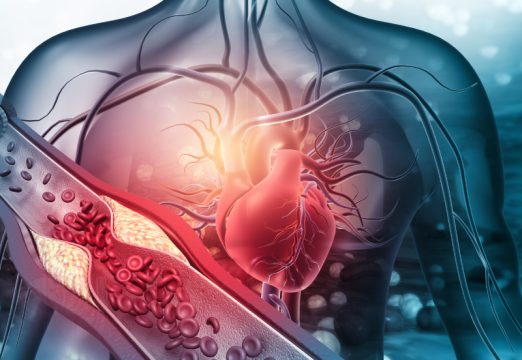The use of intravascular imaging helps improve diagnosis in situations where a conventional coronary angiography might not be conclusive. That is the case of patients with myocardial infarction with non-obstructive coronary artery lesions (MINOCA). The largest MINOCA cohort reported so far has shown 5%-7% prevalence.

This pathology, initially considered benign, presents a remote mortality rate of 4.7% on average, and it was observed that, at 4-year followup, 25% of these patients presented a major cardiovascular event (MACE). MINOCA has heterogeneous etiology and can be caused by lesions both atherosclerotic (including plaque rupture, plaque erosion and calcified nodules) and non-atherosclerotic (vessel spasm, microvascular dysfunction, and spontaneous coronary dissection).
The aim of this study was to compare clinical outcomes of atherosclerotic MINOCA (At-MINOCA) vs non-atherosclerotic MINOCA (No-At-MINOCA) in terms of MACE (death, myocardial infarction, culprit vessel revascularization, stroke, rehospitalization) during 12 months after MINOCA diagnosis.
A retrospective analysis of 7423 patients with acute coronary syndrome (ACS) was carried out, 294 presenting MINOCA (4% of the analyzed cohort). 190 received OCT at diagnosis. Myocarditis, cardiomyopathies or PTE patients were excluded. Primary end point was MACE at 12-month followup.
Mean age was 55, 25.3% were women and 13.7% were diabetic. Most patients presented ST elevation ACS with (62.1%) and the most frequently involved artery was the anterior descending (64.7%). When looking at myocardial perfusion according to TIMI, there were ≥90 flow cases, mainly among No-At patients (major microvascular dysfunction).
Among At-MINOCA patients (52.1% of the cohort) there was plaque erosion in 33.7%, plaque rupture in 17.4% and calcified nodules in 1.1%, while among the No-At-MINOCA cohort 4.2%saw spontaneous coronary dissection, 4.7% coronary spasm, and 38.9% were of unclassified cause. 86% of patients with atherosclerosis saw thrombi, mainly white (61.2%).
Read also: AHA 2020 | In Most Cases, Imaging Can Determine What Causes MINOCA.
Compared against No-At-MINOCA, At MINOCA patients presented worse clinical outcomes, with higher MACE rate (15.3% vs 4.5%; P=0.015), higher culprit vessel revascularization (6.1% vs 0%, P=0.030) and higher rehospitalization rate for progressive angina (6.1% vs 0%; P=0.030), with no difference in mortality.
Atherosclerosis etiology was an independent predictor of primary end point when adjusting for sensitivity, with HR 5.36 (CI 1.08-26; P=0.04).
Conclusions
In 61.1% of cases, researchers were able to determine the underlying cause of MINOCA with the use of OCT. Plaque erosion was the main diagnosis in At MINOCA patients. At one year, these patients with atherosclerosis findings (mainly men and smokers) presented significantly higher events rate (HR 5.36), mainly because of revascularization and hospitalization for progressive angina.

Dr. Omar Tupayachi.
Member of the editorial board of SOLACI.org.
Original Title: Clinical Characteristics and Prognosis of MINOCA Caused by Atherosclerotic and Nonatherosclerotic Mechanisms Assessed by OCT.
Reference: Ming Zeng, Chen Zhao, Xiaoyi Bao, Minghao Liu, Luping He, Yishuo Xu, Wei Meng, Yuhan Qin, Ziqian Weng, Boling Yi, Dirui Zhang, Shengfang Wang, Xing Luo, Ying Lv, Xi Chen, Qianhui Sun, Xue Feng, Zhanqun Gao, Yanli Sun, Abigail Demuyakor, Ji Li, Sining Hu, Giulio Guagliumi, Gary S. Mintz, Haibo Jia, Bo Yu, Clinical Characteristics and Prognosis of MINOCA Caused by Atherosclerotic and Nonatherosclerotic Mechanisms Assessed by OCT, JACC: Cardiovascular Imaging, 2022.
Subscribe to our weekly newsletter
Get the latest scientific articles on interventional cardiology





